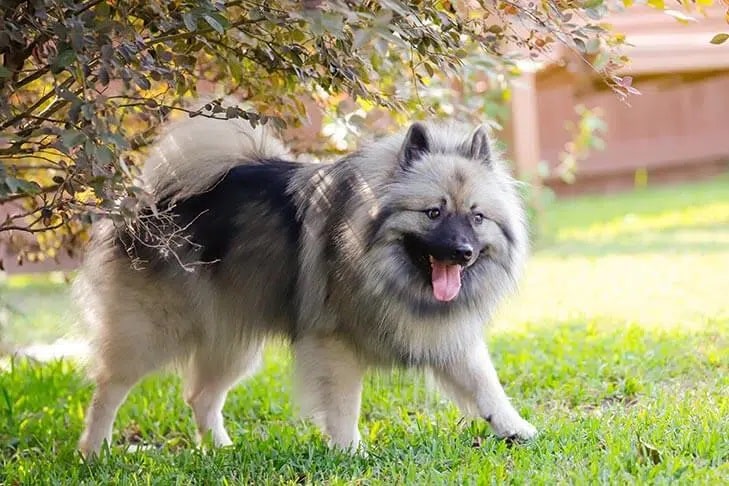Gone are the days when dogs had to lie around the house (or worse, in a crate) day after day waiting for something interesting to happen. The most exciting event of the day was usually being let out in the backyard to wander around in the familiar sights and scents. Or if they were lucky, the home-dog might get to go on a brief on-leash walk around the block to meet some neighborhood friends and send a few pee-mail messages.
In the last few decades, a pivotal change has occurred that has boosted the quality of dogs’ lives immensely, and dogs all over the world are cheering! There has been a phenomenal proliferation of dog sports in which just about any dog and their person can participate, whether just for fun or for the heart-racing joy of competition.
Let’s look at “Pete,” a Philadelphia street dog who was adopted by Anne during the earliest days of the COVID pandemic. Anne’s office had moved to a work-at-home system, allowing her the convenience of working all day in her pajamas. One sunny day in April, Anne decided to get up early, get dressed, and take Pete (and herself) out for a long walk to include a little free-run time in a park before it filled with mothers and pre-school children.
While walking to the park, Anne felt the exhilaration of being outdoors as she smelled the emerging spring flowers and saw the glittering morning sun reflected in the dewy grass. When she arrived at the park, however, she was dismayed to see that there were already people and dogs running around. She wondered how Pete would cope, as he was often fearful around new people and other dogs. Then she noticed that the people seemed to be training their dogs to run through tunnels and over obstacles.
With Pete held on a short leash, she approached to inquire what was going on. The people called their dogs over and put them on leashes. Anne noticed that the dogs all had big smiles on their canine faces. One woman knelt down and introduced herself to Pete, who let her scratch him on the side of his chin. She explained that they were training their dogs to participate in a sport called Dog Agility.
The dogs and people seemed to be having so much fun that Anne decided to see whether Pete might be interested in learning this new game. She joined an Agility class hosted by a local dog club, and watched, amazed and delighted, as Pete began to open up to people and other dogs. He became more confident, not only in class but in all kinds of new situations. Anne quickly became addicted to the excitement and challenge of the sport herself. She and Pete now spend many evenings and weekends training and competing in Dog Agility. Anne is proud of the rosettes that Team Pete is awarded, but even happier about the unexpected, growing sense of satisfaction and completion in her relationship with Pete.
Today there are literally dozens of sports in which dogs of all shapes and sizes can compete. The American Kennel Club alone sponsors over 30 different sports with several million entries a year, and there are many other organizations, both national and international, that host dozens of additional dog sports. There is even talk of making Dog Agility an Olympic sport.
Broadly speaking, dog sports can be divided into those that recapitulate the original purposes for which dogs were bred, sometimes referred to as Performance Sports, and those that are available to dogs of any background, also called Companion Sports. Table 1 lists just some of the sports in both of these categories. As you can see, there is an activity that will delight dogs of any size, shape or age.
Dog sports provide numerous benefits to both dogs and their people. There are the obvious physical advantages of getting exercise, which is proven to improve health and longevity. Just as important, however, is the fact that learning new skills at any age improves cognition and buffers the brain against aging changes.
But there is a third benefit that rarely is mentioned, or even recognized. Numerous recent studies have demonstrated the importance for people of all ages to connect with nature. Experiencing nature improves mood, reduces feelings of stress and anxiety, and boosts confidence, both of people and their dogs. What many don’t recognize is that dogs constitute our very own, in-home connection with the natural world. Training and competing in canine sports at any level is a formalized way to spend quality time with the natural world—it’s a win-win for both parties!
If you would like to try a dog sport but don’t know where to begin, the best place to start is at a local dog club—a quick online search will give you lots of choices. Check their websites to learn when their training classes are and drop by to watch a session or two without bringing your dog. Ask club members about opportunities to train and participate in various dog sports that interest you. Wherever you are met with a lot of enthusiasm and encouragement, that’s the place to go!
If you are not the competitive type, don’t worry. There are many people who train their dogs in sports but never compete. They train for fun and a little exercise, but most of all to be able to see the joy in their dogs’ eyes, and the smiles on their faces.
Companion Events
|
|
Agility
|
A popular canine sport in which a handler directs
a dog over an obstacle course, running against time.
|
|
Barn Hunt
|
A sport in which dogs hunt and find rats
(safely concealed in PVC tubes with air holes)
that are hidden among bales of straw.
|
|
Bikejoring
|
A sport in which a dog or team of dogs is attached to
and pulls a person on a bicycle.
|
|
Canicross
|
A sport in which people run cross-country
with their dogs attached in front.
|
|
Conformation
|
A competition in which purebred dogs are judged
on their structure and gait against a written description
of the ideal dog of that breed.
|
|
Coursing Ability
|
A sport in which dogs chase a white plastic lure
(to imitate prey) that is moved along the ground
by a battery-operated string and pulley system.
|
|
Disc Dog
|
A sport in which dogs retrieve flying discs while
performing various movements, such as leaps and flips.
|
|
Dock Diving
|
A game in which dogs compete by jumping for
distance or height from a dock into a body of water.
|
|
Fast CAT
|
A game in which dogs chase a white plastic lure
in a straight line over 100 yds.
|
|
Freestyle
|
A teamwork sport in which dogs and handlers perform
a thematic routine, moving together to music.
|
|
Flyball
|
A relay race in which teams of 4 dogs run over 4 small hurdles, 10 ft. apart, retrieve a tennis ball that is ejected by pressing a pedal on a box, then return over the hurdles.
|
|
Mushing
|
An endurance competition in which dogs pull sleds
(or land rigs) over a specified course, which may vary
from 1 to 1,150 miles.
|
|
Nosework or Scent Work
|
A sport in which dogs search indoor and outdoor areas, vehicles, and containers for specific scents.
|
|
Obedience
|
A sport in which judges instruct handlers to have
their dogs perform several exercises on command.
Dogs are judged on the precision of their responses
and teamwork with their handlers.
|
|
Rally
|
A sport in which the dog and handler proceed through a course of 10 to 20 designated stations, each of which has a sign which provides instructions regarding a skill to be performed.
|
|
Tracking
|
A test in which a dog follows the scent of a person
over a 400- to 800-yard track, aged from 1 to 5 hours.
|
|
Treibball
|
A sport in which dogs gather and drive large exercise balls
into a soccer goal.
|
|
Weight Pull
|
A competition in which dogs pull a loaded sled
across the ground for various distances.
|
Performance Events
|
|
Carting
|
A sport in which a dog pulls a cart filled with supplies,
such as farm goods or firewood, and sometimes people,
over a specified course.
|
|
Coon Dog Tests
|
A competition that has many different facets, including
Bench Shows, Field Trials, Night Hunts, and Water Races, providing owners with the opportunity to demonstrate the beauty and natural abilities of purebred Coonhounds.
|
|
Earth Dog Tests
|
A test in which Terriers and Dachshunds run through underground tunnels to find a caged rat.
|
|
Field Trials/Hunt Tests
|
Sports in which Retrievers, Setters, Pointers, Spaniels, and Poodles retrieve upland game birds on land and in water.
|
|
Fox Hunting
|
An activity involving the tracking of a fox by trained
Foxhounds or other Scenthounds, and a group of unarmed followers who follow the Hounds on foot or on horseback.
|
|
Greyhound Racing
|
An ancient sport in which Greyhounds chase a lure on
an oval track. In many countries, Greyhound racing is purely amateur and conducted for enjoyment. In the United States, Australia, and some other countries, Greyhound racing is
part of pari-mutuel betting.
|
|
Herding
|
A competition in which Herding breeds herd sheep,
cattle, or ducks over a specified course and move
selected animals into a pen.
|
|
Lure Coursing
|
A sport in which Sighthounds chase a white plastic lure
(to imitate prey) that is moved along the ground by
a battery-operated string and pulley system.
|
|
Schutzhund (IGP, IPO), French Ring Sport
|
Competitions that combine Obedience,
Tracking, and Protection Work.
|









